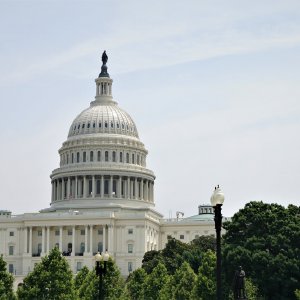Taking Back Our Cities from Opioids

How do we take our cities back from the opioid epidemic? Are we even aware of the need to do this? The American people need to know that the U.S. is currently struggling with an opioid addiction epidemic, an epidemic quite unlike anything we have experienced before. This is a truly terrible and exacerbating condition, a crippling difficulty, one quite unlike anything we have ever experienced before. Opioids are the keystone of the surge in addiction that has swept across America.
Opioid Addiction in the United States Today
According to the National Survey on Drug Use and Health, at least three-thousand, nine-hundred Americans initiate the non-medical use of prescription opioids for the first time every single day. This means that every year, one million, four-hundred and twenty-three-thousand, five-hundred Americans try opioids non-medically for the first time. It is safe to say that this is the fastest growing recreational drug use trend that our nation has ever experienced.
And it is a dangerous trend too. Lethal, in fact. As interest in opioid drugs has increased, so have overdoses on these drugs also increased. According to the Centers for Disease Control and Prevention, tens of thousands of Americans lose their lives from overdoses on opioid pain relievers every year. In fact, the CDC estimates that about one-hundred and nineteen Americans die from opioid overdoses every day. This means that five people across America die every hour from opioid overdoses.
It is difficult to determine exact numbers for just how many Americans are struggling with an addiction to opioids (most opioids are legal and many Americans are addicted to them but they also have legitimate prescriptions for them). However, the National Survey on Drug Use and Health estimates that roughly eight million Americans are dependent on opioid drugs to the point of self-medication. And the NSDUH estimates that another at least four million Americans are legitimate patients to opioid pain relievers but are also fully, chemically dependent on their pain relievers too. And again, these are just estimates. There could be many, many more Americans who meet the criteria for a physical or mental dependency habit to opioid pain reliever drugs.
We can rest assured at this point that the United States of America is in the midst of a crippling opioid addiction epidemic, an addiction crisis the likes of which this country has never seen before. The problem is exacerbated by the fact that much of the opioids misused are drugs that are completely legal and in fact which are encouraged in our society, yet which are just as dangerous as heroin and other street drugs are.
Needless to say, we have on our hands a crippling and eviscerating problem with opioid addiction, so how are we going to remedy it? How are we going to save our cities from opioids?
Educating Community Representatives and Opinion Leaders

The first thing we have to do is get the American people aware of the fact that opioid pain relievers are not the miracle drugs, the fascinating marvels of modern-day pharmacological science that we are made to believe that they are. Not by a long shot.
Americans are already starting to see this, but the true understanding of these drugs for what they really are is a slow understanding to develop, and remember that in the meantime hundreds of people are dying from overdoses on opioids every week, thousands every month. We need to raise awareness of the risks attendant with opioids and we need to do it fast.
The best way to do this is to inform community representatives, opinion leaders, teachers, church ministers, political leaders, group directors, company executives, and other such individuals about the risks attendant with opioids. These could be individuals anywhere from school teachers up to mayors of cities to governors and senators, even the President himself.
In the words of Stephen Williams, the Mayor of Huntington, West Virginia, a city terribly affected by opioids:
“If you name a problem, you can own the problem, and if you own the problem, you have a fighting chance to defeat it.”
“If you name a problem, you can own the problem, and if you own the problem, you have a fighting chance to defeat it.”
We need to take that advice to heart and get our nation’s leaders understanding of the opioid problem, so they then can use their own resources to disseminate that information to millions of Americans. Raising awareness of the problem is probably the most important step at this time towards creating a change in the addiction epidemic as it stands today.
Increasing Law Enforcement Efforts

But we can’t just raise awareness of the opioid epidemic. Getting all of America aware that opioid pharmaceuticals are not the miracle drugs that we were told they were is a start, but it won’t change the fact that tens of millions of opioid pills are bought and sold illegally on the street and over the internet every year. We also have to increase efforts on the part of law enforcement groups to curb this problem.
The city of Seattle, Washington is making a strong effort in this direction by initiating the “Law Enforcement Assisted Diversion Program.” This is a program, a coalition really, of law enforcement officers in the Seattle area, a coalition tasked with directing opioid addicts out of the criminal justice system and into the addiction treatment system.
The city of High Point, North Carolina is using a similar approach while also directing efforts towards shutting down overt drug markets on the street level. Law enforcement efforts need to expand to include not just the arrest of drug criminals, but also the liaison of drug addicts into rehab and treatment, not jail cells.
Putting a Strong Effort on Opioid Addiction Treatment
Speaking of treatment, this is the next area we need to expand on. We can do just about everything with raising awareness, with preventative efforts on the part of law enforcement, and with educating the American populace on the risks regarding opioids, but that won’t change the fact that there are still millions of Americans who are actively addicted to opioid drugs.
These individuals will not respond to opinion leader evidence, raised awareness, law enforcement efforts, or education on opioids. Addicts respond to only one approach, and that is treatment. We can’t incarcerate our nation’s drug addicts. We have to rehabilitate them through efficient and professional drug and alcohol addiction treatment centers.
The Substance Abuse and Mental Health Services Administration estimates that at least twenty-three million Americans are addicted to drugs and alcohol. The majority of them have either had a run in with opioids or used opioids as their drug of choice. This group represents about fourteen percent of our nation’s adult and teen population. This group carries the weight of America’s addiction epidemic on their back, and addiction in the U.S. is going nowhere until these individuals are helped.
A Challenge Ahead
Tackling a problem as big as the opioid addiction epidemic is going to be the challenge of the century. And the challenge is exacerbated by necessitating a multi-faceted approach. But the very future of our country depends on our ability to overcome the addiction epidemic and move forward past this problem. It is worth our while to strive for a sober and addiction-free America.
Sources:
- https://www.usnews.com/opinion/policy-dose/articles/2017-01-25/how-cities-can-combat-the-opioid-drug-epidemic
- http://leadkingcounty.org/
(To preserve privacy, the photo does not show the people featured in this article.)


 ®
®